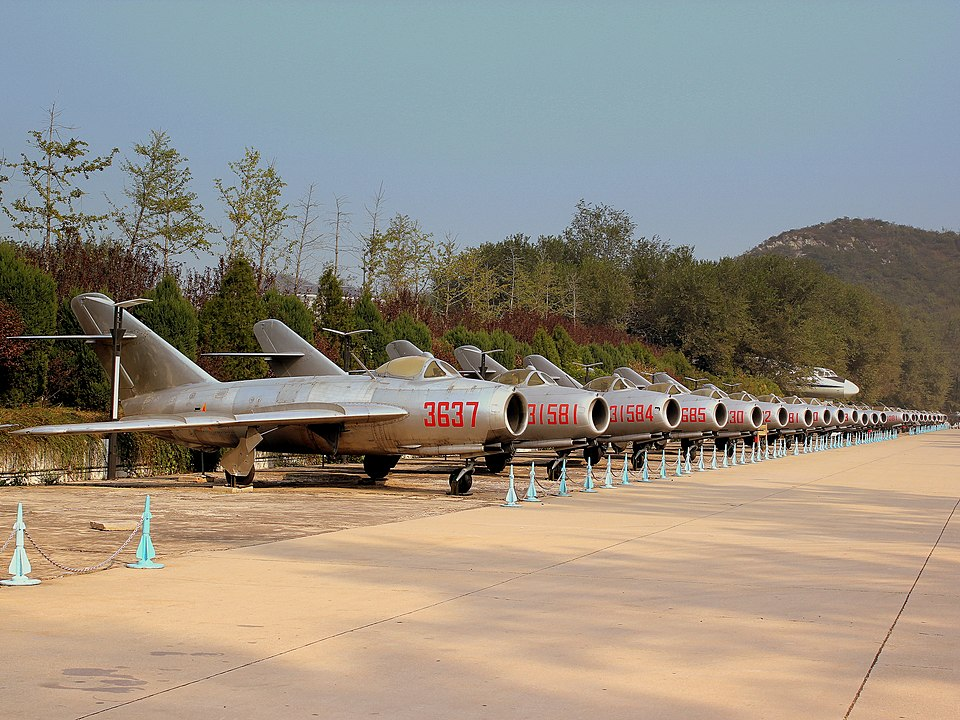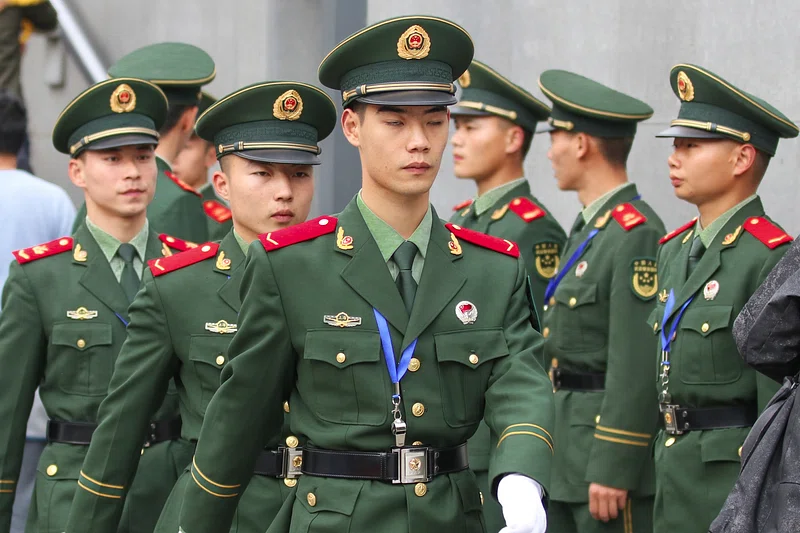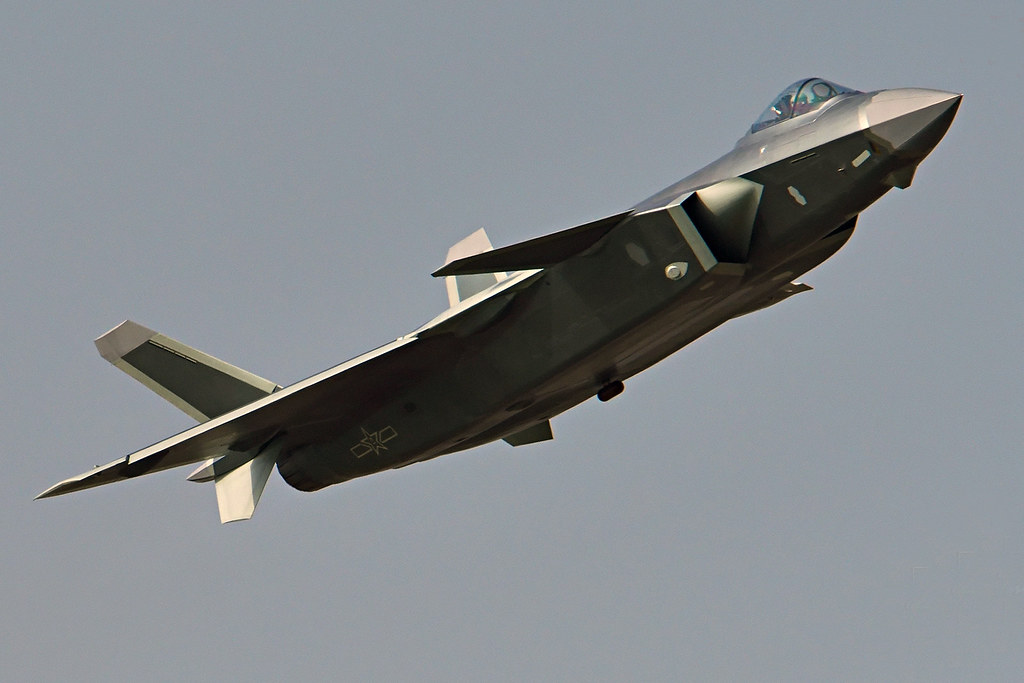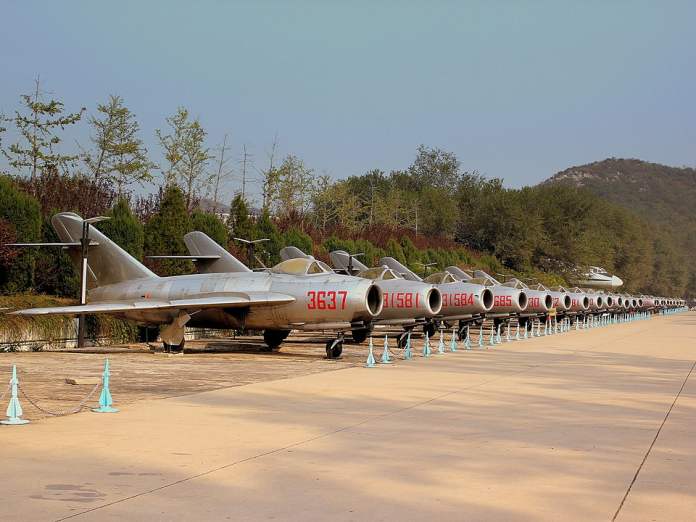
China’s stealth fighter expansion is no longer a distant concern-it’s unfolding in real-time. In less than a decade, Beijing has gone from lagging behind in carrier-capable stealth aviation to fielding multiple next-generation prototypes, raising urgent questions in Washington over the future of air dominance in the Indo-Pacific.
The debut of the carrier-launched J-35, alongside sightings of the J-36 and J-50 both touted as 6th-generation designs represents a strategic leap. But the true measure of the aircraft is not only stealth shaping but sensors, computing, weapons integration, and the speed at which China can produce them. This list breaks down the most critical developments shaping the balance of power above the Pacific.

1. The J-35’s Carrier Launch Capability
The PLA Air Force had, until recently, lacked an ocean-launched 5th-generation stealth jet, a situation that confined its reach to well within the first island chain. That calculus has changed with the operational debut of the J-35. In form, this is an aircraft very similar to the US F-35C, and it is now flying from Chinese carriers-in small numbers. Its ability to operate at sea enables China to project stealth airpower deep into contested maritime zones, possibly in combination with future 6th-generation designs for extended reach.

2. Emergence of the J-36 and J-50 Prototypes
The J-36 and J-50 emerged into public view only in the past few months, with little information regarding their actual capabilities. Both are thought to be 6th-generation concepts both may be capable of carrier operations. The triple-engine configuration of the J-36 suggests a heavy fighter-bomber mission, while the J-50’s configuration remains a mystery. Analysts emphasize that the deciding advantage will belong to unseen capabilities: advanced sensing, AI-enabled computing, and long-range weapons.

3. J-36 Design Rapid Iteration
Images of a second J-36 prototype reveal sweeping changes: new diverterless supersonic intakes, re-engineered landing gear, and flat two-dimensional thrust-vectoring nozzles more in line with the F-22’s. The implication is that Chengdu’s designers are trading some rear-aspect stealth for greater maneuverability and control authority at high angles of attack. Major redesigns within a year underscore the speed of China’s accelerated development cycle, unusual in the modern history of fighter programs.

4. Civil-Military Fusion as a Production Force Multiplier
China’s Military-Civil Fusion approach unites state-owned enterprises, private firms, and universities toward accelerating defense innovation. This system, for example, allowed the J-20 fleet to increase from an estimated 100 to over 300 in five years. By incorporating civilian manufacturing capacity into military needs, Beijing can increase the production rate for new fighters much more rapidly than the US can today with its more segregated government-industry relationship.

5. Integration of AI and Dual-Use Technology
MCF-initiated programs have funneled PLA funding into hundreds of universities to drive research in AI, machine vision, and autonomous systems. These dual-use technologies are foundational to the creation of an “intelligentized” force by 2035. This kind of integration would enable future Chinese fighters to control unmanned wingmen, compress decision cycles, and conduct operations with unprecedented levels of situational awareness.

6. The US F-47 and F/A-XX Response
Early manufacture of the US Air Force’s F-47, part of the Next Generation Air Dominance program, is underway, with a first flight targeted for 2028. The carrier-based F/A-XX concept promises B-21-level stealth in a fighter’s agility envelope, with ranges potentially topping 2,000 miles. The designs aim to counter China’s expanding reach, but production timelines leave a window in which Beijing’s fleet could grow unchecked.

7. Industrial Capacity and Fleet Mass
Brandon Weichert notes that China currently operates five J-20 production lines, which are each capable of producing a new aircraft every eight days. Even with fewer J-35s today, a target of 50 per year could allow China to match or surpass US F-35 numbers within a few years. In a high-end conflict, massed formations of networked 5th- and 6th-generation aircraft could overwhelm boutique US capabilities.

8. Carrier Fujian’s Role in Air Superiority
The electromagnetic catapults on China’s 80,000-ton Fujian supercarrier allow for the launch of heavier aircraft, such as the KJ-600 early-warning plane, extending the PLA Navy’s surveillance and strike reach far into the Pacific. The Fujian’s air wing-comprising upgraded J-15s, J-35s, and even 6th-gen fighters-will function as a floating command center, further complicating US carrier operations inside the first and second island chains.

9. Strategic Implications for the Indo-Pacific
China’s stealth surge is squarely aimed at contesting US air dominance over the Indo-Pacific. Melding carrier-based stealth fighters with rapid production, AI integration, and long-range sensing, Beijing is assembling a force to deny US access while imposing its own aerial perimeter. The question for Washington now is whether current modernization plans can stay ahead of the multifaceted challenge.
The combination of technological ambition, industrial scale, and integrated civilian-military innovation makes China’s expansion into carrier-launched stealth aviation, coupled with accelerated development of 6th-generation fighters, a turning point in the Indo-Pacific air balance. This gives Beijing a pathway to challenge US air superiority within the decade. For defense planners, urgency is not only about matching capability but also about closing production gaps before the skies irrevocably tilt.


